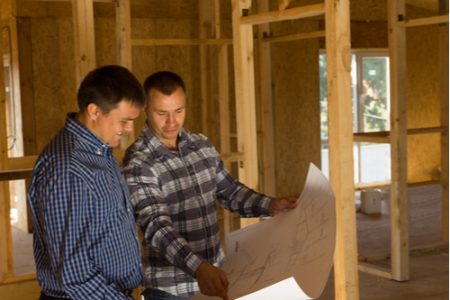
Trusting Clients Make for the Best Projects – How to Build Client Trust, Faster
.
.
.
For most clients, a new build or home addition is one of the biggest investments of their lives. So, if a client’s going to engage you, they need to know they can trust you. How do you ethically build their trust?
According to Albert Einstein, “Whoever is careless with the truth in small matters cannot be trusted with important matters.”
Put another way, clients typically build trust in you over time by repeatedly testing and confirming they can trust you in the future.
At first, they’ll take small risks like investing the time to make a phone to your practice. Or, inviting you to visit their home for an initial discussion.
This eventually leads to a commitment to invest a life-changing amount of money in a project you’ve designed.
Without the right tools and techniques in place, this can be a slow process. So, how can you ethically hasten trust building with clients?
Here are 6 tips to create positive, trusting and respectful relationships with clients.
- Enable Clients to Take Small Risks When First Engaging
Start by inviting them to take small risks with you as part of your client engagement process. These small risks in the early days might include:
>Responding constructively to a client’s first phone enquiry about your practice.
>Following up with an email highlighting specific items they mentioned in the phone call
>Being punctual for meetings or fulfilling time commitments
Typically, these early ‘tests’ see clients testing the water to see if they can trust and rely upon you.
- Educate, Educate, Educate
Clients love it when their architect or designer empowers them with great information. You’re the expert and showcasing your skills builds trust while enhancing the client’s experience of your practice.
There are many ways to do this but making it part of your client engagement will grow your client list while delivering a positive client experience.
The most labour-intensive way to educate clients is a one-on-one series of client meetings.
Instead, create a client education initiative to position you strongly in the client’s mind as the expert.
Client education comes in a variety of forms:
- Hard copy or soft copy pack that is hand delivered or emailed (respectively) to the client before your first meeting
- Content plan that drip-feeds education-based articles to clients to help them on their design and construct journey. (Using a system like mailchimp or sendinblue that you can pre-program saves you loads of time.) This information should never be spammy. Instead, it’s educational and helps clients make more informed and better decisions throughout the journey. If you start a database, make sure it’s an honour for clients to be included. That is, deliver high quality content (ideas) to showcase your wares.
- Video channel illustrating how you’ve fulfilled client briefs in the past, project tips, design ideas – whatever you find is a powerful drawcard for clients to your practice.
There are hundreds of ways to educate clients. Choose one that delivers value to prospectives clients that you can set up to run without too much human intervention.
- Never Let a Client Get an Unpleasant Surprise
More a rule of thumb than a tip, managing unpleasant surprises can be anything from texting ahead to advise if you’re running late for a meeting to flagging budget impacts when a client selects European tap fittings for their budget-sensitive renovation.
To support client budget expectations, take a free, 4-week ProCalc trial
Your client builds faith in you and your practice when you can remove any shocks from your relationship.
If you have bad news for them, forewarn them as soon as possible.
- Plan for One Budget Message
As we’ve said, clients don’t like unwelcome surprises. So, how do we shift their – often too low – budget expectations?
Client budget expectation management is a huge topic, and you can see the webinar “Stop Losing Sleep Over Client Budget Expectations” (43 mins) for a practical and ethical approach.
Simply, clients are typically open to re-setting their budget expectations only once in a project. That means architects and designers need to be careful to provide a consistent message to clients as their design develops.
The message?
The opinion of probable cost is a specific range and this range changes with the design.
To obtain an opinion of probable cost, free trail ProCalc and provide the report to your client. You can calculate it after your first client meeting then re-calculate as your concept evolves pre-QS.
- Social Proof Builds More Trust than Anything
Human beings are social creatures who have evolved to observe the reactions of others to forecast what’s going to happen in specific situations. Our evolutionary brains are hard wired to trust these social cues from other humans implicitly.
That’s why observing social proof is so important for your prospective clients.
Enable prospective clients to ‘prove’ you’re a good choice to themselves and build trust by providing testimonials, case studies, portfolio pieces, awards, references from other industry professionals and social media endorsement.
Keep collecting this social proof and, over time, you will achieve a critical mass of social endorsement that’s hard for prospective clients to deny.
You Might Also Like:









